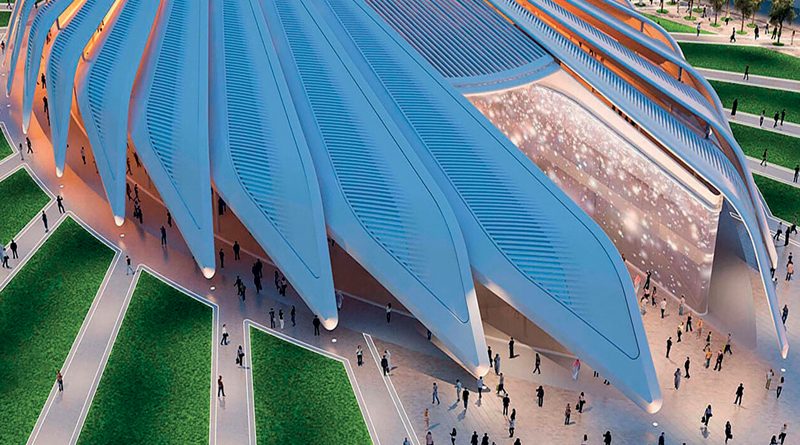Hydraulics governs the “wings” of the roof
Duplomatic represents the engineering excellence of Made in Italy at Expo 2020 Dubai, where the Italian company designed and built the roof motion system of the United Arab Emirates pavilion, the most important of the entire Universal Exposition, designed by architect Santiago Calatrava in shape of falcon wings.
Duplomatic MS Spa contributed with a futuristic engineering project to Expo 2020 Dubai, the Universal Exposition in the United Arab Emirates (1 October 2021 – 31 March 2022, the first to take place in Arabia. Italy, as official participating country, brings the excellence of its engineering to the Arabian Peninsula, but above all that all-Italian ability, now recognized in the world, to develop large tailor-made projects and transform major technological challenges into effective and innovative solutions. In this context, Duplomatic was commissioned to create the hydraulic system for opening the roof of the United Arab Emirates pavilion, designed by architect Santiago Calatrava in the form of falcon wings, the symbol of the host nation.
Translating aesthetic requirements into engineering
“The pavilion designed by Santiago Calatrava,” explained Paolo Leutenegger, General Manager of Duplomatic MS, “is a work of art and the first major difficulty is represented by the translation of aesthetic and experiential requirements into technical and engineering parameters. The Expo project represented an important challenge for our Group, both from a technical, and logistical – organizational point of view. The development of the wing motion system of the UAE pavilion is unique in the world.”
This project is the largest hydraulic system of this kind ever built. The Duplomatic system consists of a 1 MW power hydraulic unit; a 20,000 l tank which distributes pressurized oil to the 46 hydraulic cylinders of the 28 wings through 2.5 km of piping;17 electrical cabinets for power supply and motion control, featuring 9 PLCs, 25 km of optical fiber and cabling, over 2,000 control points distributed throughout the pavilion.
“Wing motion must be perfect from an aesthetic point of view and this is helped by the architecture of the control electronics, featuring nine computers. The project is majestic”, Leutenegger concluded.
This innovative motion control solution will remain on display for the ten months of the Expo but is destined to leave its mark on the history of the Universal Exposition.

